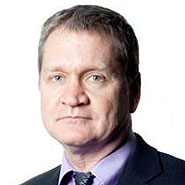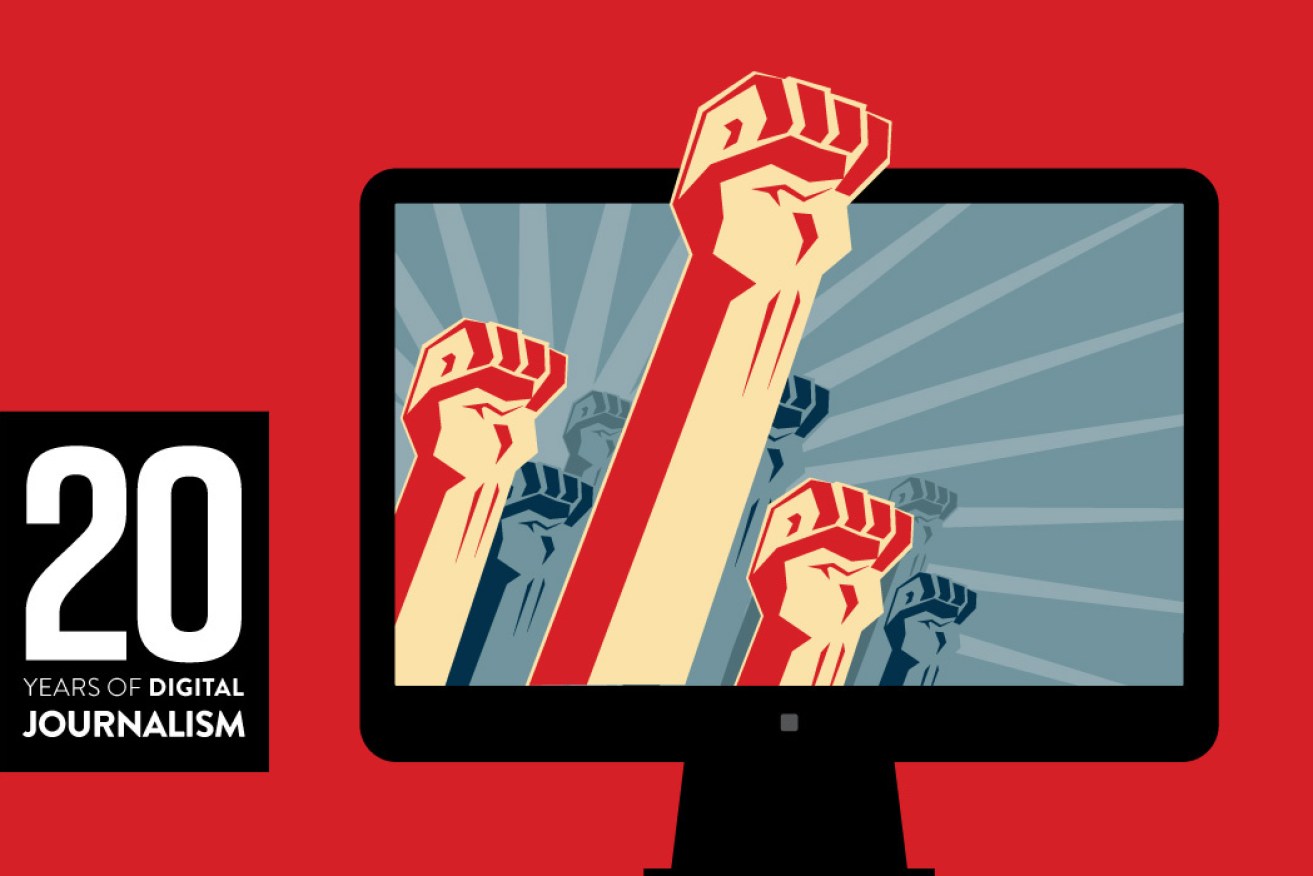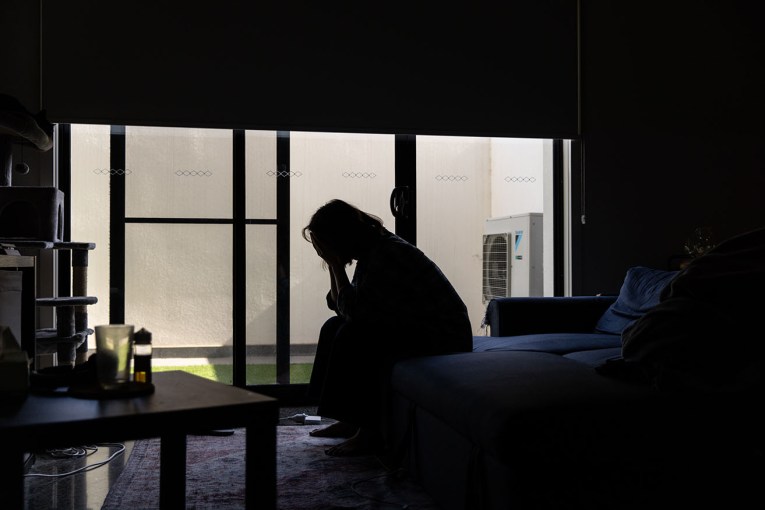Whatever happened to the (digital news) revolution?


 To mark its fifth birthday, The New Daily investigates the impact of the rise of the internet on journalism. This is part one in the two-part series.
To mark its fifth birthday, The New Daily investigates the impact of the rise of the internet on journalism. This is part one in the two-part series.
Remember when the doctor says, just before giving you a needle, this is going to sting just a little bit?
The chairman of the Australian Competition and Consumer Commission, Rod Sims, adopted the same bedside manner when he recently announced he had approved Nine Entertainment’s takeover of Fairfax Media.
Mr Sims admitted Australia would be “slightly worse off” after the Nine-Fairfax deal but argued there would still be a diverse range of views for local audiences.
“Post the merger, only Nine-Fairfax, News/Sky, Seven West Media and the ABC/SBS will employ a large number of journalists focused on news creation and dissemination,” he wrote.
“With the growth in online news, however, many other players, albeit smaller, now provide some degree of competitive constraint. These include, for example, The Guardian, The New Daily, Buzzfeed, Crikey and The Daily Mail.”
After roughly 20 years of digital news in Australia – it’s time for a stocktake. What is to be made of the ACCC’s argument that competition in online news is already here or will develop … does it stack up?
In the Nine-Fairfax deal, the ACCC considered competition in the market for journalism as well as in advertising, which was previously the dominant concern in past media takeovers.
The ACCC found that Nine’s news and current affairs was aimed at a “mass market” while Fairfax’s print and online titles tend to “more in-depth coverage, targeting the demographic of its subscription audience”.
It must be said that Sims’ record stacks up pretty well compared to other Australian regulators, like the dozy watchdogs who are supposed to be monitoring corporations (ASIC) and financial services (APRA).
And the Nine-Fairfax deal was on the cards after the Coalition government last year removed the “two out of three” rule on media ownership.
Those laws were overrun by digital media, which was meant to germinate a bumper crop of new media players by cutting the high cost of entering the industry. You didn’t need a printing press, a TV network or a radio station if you had a laptop and a smart phone – plus grit and some technical nous.
Yet the established media companies – News Corp, Nine Entertainment, the government-owned ABC, Fairfax and SevenWest – are also strong online. The most significant “new” entrants are offshoots of international media outlets, which make varying contributions to local journalism.

The merger between the media giants is expected to go ahead. Photo: Simon Rankin
The Guardian Australia employees about 50 journalists and has done valuable journalism on targeted issues – migration and refugees, the environment, national politics, freedom, security and indigenous affairs.
The Daily Mail‘s Australian operation is popular and, like its UK parent, has a penchant for celebrities and royals. But the local arm is under fire from local journalists and the ABC’s Media Watch for lifting stories written and researched by others.
The New York Times‘ Australian operation mostly offers curated content rather than substantial on-the-ground reportage. It is often explaining Australia to outsiders. Or running quaint stories about what a Weird Mob we are Down Under. Mate.
The only Australian-owned, digital-native news outlet in or around the top 20 is The New Daily, which has just celebrated its fifth birthday and is backed by 29 industry super funds. The New Daily is still making losses, but employs 20 journalists plus contributors.
There are other valuable local players – the Private Media stable (whose titles includes Crikey, SmartCompany and The Mandarin), Mumbrella, RenewEconomy, New Matilda, Independent Australia. And Morry Schwartz’s stable (which includes The Monthly magazine, The Saturday Paper and the Quarterly Essay).
There is a home-grown digital success story in The Conversation, where a team of editors work on articles by academics for the wider public. It has gone international and is free, but has the backing of major universities while donations to it are tax-deductible due to its “cultural” status.

This is part one in The New Daily‘s two-part special report on the state of online news.
There are positive signs, such as blogger William Summers being a Walkley awards finalist last year for breaking the news (and evidence) that Barnaby Joyce was likely a New Zealand citizen.
And some new digital media outlets have grown out of being one-person shows – like Stephen Mayne’s pioneering role in founding Crikey.
IndigenousX was founded by one person, Luke Pearson, and is now an independent website and a Twitter handle that gets shared around every week with 30,000 followers. Greg Jericho started as an individual blogger (GrogsGamut) before being hired by The Guardian.
Investigative journalist Michael West went the other way, making his name covering big business for Fairfax before setting up his own website. Some brave souls, like investigative freelancer/author Ginger Gorman and information/privacy activist Rosie Williams, rely on public support (as does IndigenousX and Michael West).
Without institutional support, smaller digital publications struggle to stay afloat. It’s difficult for them make a crust from online advertising and to charge for access when there’s so much free content out there.
However, it’s about platforms and networks, not just content.
Back in 2016, the British media academic and journalist, Emily Bell, argued the “news ecosystem” has changed more dramatically in the past five years than perhaps at any time in the past 500.
Advances in technology – especially on mobile phones – meant spending more time online, doing more things and giving it more attention.
“Social media hasn’t just swallowed journalism, it has swallowed everything,” Ms Bell wrote.
“It has swallowed political campaigns, banking systems, personal histories, the leisure industry, retail, even government and security. The phone in our pocket is our portal to the world …. in many ways this heralds enormously exciting opportunities for education, information, and connection, but it brings with it a host of contingent existential risks.”
She identified what she saw as the two most significant developments:
- News publishers losing control over distribution to social media companies, with the news being ‘filtered through algorithms and platforms which are opaque and unpredictable”;
- Social media giants such as Google, Facebook, Apple, and Amazon, becoming “extremely powerful in terms of controlling who publishes what to whom, and how that publication is monetised”.
Ms Bell said journalism was a “small subsidiary activity” for social media platforms, but was of central interest to citizens. The internet enabled journalists to do powerful work, while also helping to make publishing journalism uneconomic.
As the ACCC says, it’s a struggle to “monetise” online journalism. You can get a respectable online audience but still not much revenue.
But online advertising in Australia is worth billions every year, so where does all the money go?








